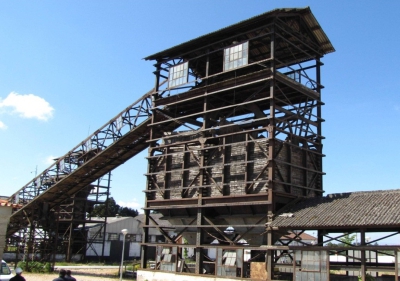|
2015 – A VERY CHALLENGING YEAR |
|
At an ending year, it is safe to assume that 2015 will be a good year from an economic point of view, with positive financial indicators, in spite of the significant increased financing costs largely justified by late payments from many of our clients. The weight of raw materials and the impact that their price has on many of the economies in which we operate is a well-known fact, which has led us to focus on new contracts that are duly funded. COBA has been working intensively on the search for new and diverse markets, with satisfactory success, as can be observed in this issue of COBANews. However, it is necessary to deepen our policies for screening of opportunities, giving priority to the financial security of contracts. We anticipate without doubt that such increased prudence will be justified in the management of the Group’s daily activities of the new year that is just around the corner.
Victor Carneiro
|
|
Lx, 30 Nov 2015
|
|
PORTUGAL - “ÁGUAS SANTAS” TUNNEL ON THE A4 MOTORWAY |
|
The “Águas Santas” Tunnel, currently in operation, is integrated in the subsection Águas Santas – Ermesinde of the A4 Motorway, which connects the cities of Oporto and Amarante, and is included in the BRISA concession network. The design for widening the A4 underground works was developed by COBA in association with SENER-Engivia, and the Technical Assistance to the construction works is currently underway. The design envisages the construction of a new gallery with four traffic lanes and located north of the existing ones intended for traffic in the Amarante-Oporto direction, as well as upgrading of existing galleries, which will accommodate traffic in the Oporto-Amarante direction. These are urban tunnels with important geotechnical risks, with shallow overburdens and areas of completely weathered granitic rock. The main constraints are on the Eastern portal of the New Gallery the constructions on Dom Afonso Henriques Street / National Road NR 105; and on the Western portal, the presence of the railway line that connects Leixões to Ermesinde. In this zone, the overburden between the railway line and the top heading of the new North gallery amounts to about 5 m. The cross-section accommodates a clearance of 16.65 x 5.25 m (lxh), and the roadbed comprises a 2,0 m left shoulder, a carriageway with four 3,5 m wide-lanes and a 0,65 m right shoulder. Construction works are in progress, by the group of contractors Ramalho Rosa / Cobetar, Conduril and Amandio Carvalho. Upgrading of the existing “Águas Santas” Tunnel will begin upon completion of construction of the new gallery. This tunnel has two twin unidirectional galleries with about 360 m each and is composed of 0,20 m left and right shoulders and a carriageway with two 3,5 m wide lanes. Its construction dates back to 1989 and the design was prepared in 1988. Improvements will be made to: pavements and sidewalks; the drainage system; the coating structure in areas with detected pathologies; treatment of the fire protection and renewal of soffit finishings; cables; signalling; fire-fighting network; SOS facilities inside the tunnel; replacement of the existing lighting; CCTV facilities; power supply and installation of sockets. With regard to equipment, a combined approach to both tunnels was taken into consideration, an equipment structure similar to the New North tunnel was designed, with infrastructures, such as the firefighting network reservoirs and the transformer stations, being common for both tunnels. |
|
Lx, 30 Nov 2015
|
|
PORTUGAL – “ALTO TÂMEGA” HYDROPOWER DEVELOPMENT – GEOLOGICAL & GEOTECHNICAL ASSISTANCE |
|
In October, Iberdrola, Ingeniería y Construcción awarded to the COBA Group the provision of the geological & geotechnical assistance services within the scope of the supervision of the “Alto Tâmega” Hydropower” Development, located in the Ribeira de Pena municipality. This hydropower complex involves the construction of three hydraulic undertakings, namely: Gouvães, which consists of a concrete gravity dam with a maximum height of 30 m and a powerplant with an installed capacity of 880 MW; Alto Tâmega, with a 107,5 m-high concrete arch dam and a powerplant with an installed capacity of 160 MW; Daivões, which comprises a concrete arch dam with a maximum height of 76 m and a powerplant with an installed capacity of 114 MW. The services to be rendered namely the geological & geotechnical supervision of the several envisaged works comprehend the deployment of technicians specialized in the fields of geology and geotechnics that will integrate the technical assistance and supervision team mobilized by IBERDROLA for this assignment. |
|
Lx, 30 Nov 2015
|
|
PORTUGAL – FINAL CHARACTERIZATION OF THE MADEIRA AIRPORT PAVEMENTS |
|
In September, the COBA Group was commissioned by “REN – Rede Eléctrica Nacional, S.A.” to provide the supervision and quality control services of the civil construction works and general electric facilities and coordination of safety and health of the RNT Works – Lot 2 – Central Region. The contract includes the supervision of the construction works of the following Substations: Castelo Branco – PL 60 kV Alcains, Lavos – PL 60 kV Gaia, Tábua – TRF220/60 kV – 126 MVA and Vila Chã – TRF220/60 kV – 126 MVA. COBA’s regular collaboration with REN began in 2005, and it has therefore attained significant experience in supervision of High Voltage Lines and Substations included in the National Transmission Grid. |
|
Lx, 30 Nov 2015
|
|
ANGOLA - CHICAPA II HYDROPOWER DEVELOPMENT, LUNDA SOUTH PROVINCE |
|
Under the scope of a contract signed with the Ministry of Energy and Water of Angola (MINEA), the COBA group is finalizing the studies and designs, including the Environmental Impact Assessment, for the Chicapa II Hydropower Development, located near Saurimo, in the Lunda South Province. About 40 years ago, DIAMANG, the existing entity at the time, promoted the preliminary studies to identify a regulating undertaking located upstream from Chicapa I. In the eighties of the last century, the location for construction of the Chicapa II Development was agreed upon. For the dam was selected a site immediately upstream from the existing Chicapa I undertaking, in a river section with rapids and small falls preceding the Chicapa falls. The undertaking is located about 20 km north of the city of Saurimo. The services contracted by MINEA included the execution of the basic studies, the technical, economic and environmental feasibility analysis, the preparation of the basic design, as well as the preparation of the technical specifications and tender documents for construction and supply of equipment to the Chicapa II Hydropower Development. An environmental impact study was undertaken in order to obtain the necessary license. All the field works, mapping and topographic surveys, as well as the geological / geotechnical prospecting in construction locations and borrow areas were performed during the preparation of studies and designs. From the comparison of alternative solutions carried out in the feasibility study, it was considered that the most advantageous solution encompasses a mixed homogeneous earthfill dam with a central concrete section incorporating the hydraulic structures. The dam has a maximum height of 24 m and a 2460 m crest length. The spillway is equipped with radial gates and is designed for a maximum flow of 467 m3 / s. Taking advantage of the river slope, the powerplant is located about 270 m away from the dam. It is equipped with three turbine-alternator units with vertical axis Kaplan turbines with a unit capacity of 10 MW, which turbinate a nominal flow of 41 m3/s under a net head of 26,6 m. The undertaking is completed with a 60 kV outdoor substation and an energy transmission line that connects the 220 kV/60kV Saurimo Substation to the Eastern System Network, located about 8 km from the undertaking. The construction is scheduled to last three years. The Chicapa II Hydropower Development will produce an average 111 GWh/year and will contribute towards an increased production of about 52 GWh/year in the Chicapa I Hydropower Development. The average energy produced by both undertakings, upon construction of Chicapa II, will amount to 250 GWh/hear. With the exception of the geological survey works, all other works, studies and designs were developed by several companies of the Group, namely COBAngola, LandCOBA, Tetraplano and COBA Portugal. |
|
Lx, 30 Nov 2015
|
|
MOZAMBIQUE - IMPLEMENTATION OF INTERNATIONAL SHARED WATERCOURSES AGREEMENTS |
|
The joint venture COBA/SWECO/SALOMON, led by COBA, signed a contract for development of a National Strategic Action Plan on Monitoring of Compliance in Implementation of International Shared Watercourses Agreements. Mozambique shares nine watersheds with its neighbouring countries and the aim of this study is to identify and to promote verification procedures to ensure compliance with the established agreements. For this effect, studies will identify the improvements required in the monitoring methods, in the communication channels between stakeholders within the water sector, and between these and the entities responsible for the country’s foreign relations. The result of this project will consist in an action plan that will feature the strategies for capacity building in this area and will enable a more assertive action by the parties involved. |
|
Lx, 30 Nov 2015
|
|
MOZAMBIQUE – WATER RESOURCES STRATEGIC DEVELOPMENT PLAN OF THE LICUNGO RIVER BASIN |
|
The SALOMON – COBA Joint Venture is undertaking for Direcção Nacional de Águas (National Water Directorate) and for the Administração Regional de Águas do Centro-Norte, the Strategic Plan of the Licungo River basin. The studies include the Monograph of the Basin, the Definition of Development Scenarios, and Strategic Plans for Investment & Integrated Development of Water Resources, involving the mobilization and participation with stakeholders in workshops organized locally, for discussion of the several subjects under analysis and of the proposed development options. This study covers an area of about 28 000 km2 in the central region of the country, in the Zambeze Province, and involves a wide multidisciplinary team. The results of the Strategic Plan will provide ARA-Centro Norte with the tools required for the integrated management of the Licungo River Basin and for the sustainable development of the region in which it is inserted. In addition, it incorporates measures to mitigate the natural disasters that regularly hit the Licungo River Basin, such as floods, inundations and droughts. |
|
Lx, 30 Nov 2015
|
|
MOZAMBIQUE – ESIA OF A COAL-MINING PROJECT AT TETE |
|
The COBA Group, in association with AURECON and DIAGONAL, initiated the first phase of the Environmental and Social Impact Assessment of International Coal Ventures Private Limited – ICVL’s coal-mining project in the Zambeze, which includes mining area, as well as the resettlement issues. Within this study, COBA will be responsible for assessing the baseline conditions of the following areas: soil and soil capability; surface water hydrology; geology and hydrogeology; macroeconomics, land use planning and landscaping. These studies will enable a thorough assessment of the main impacts on the physical and territorial structure associated to the project. This project, developed in compliance with the applicable regulations and according to the best international working practices will propose, as a result, the mitigation measures for the several areas under study. Studies began in early November 2015 and will have a total duration of 6 months. |
|
Lx, 30 Nov 2015
|
|
PERU – SUPERVISION OF THE STUDY FOR ASSESSMENT OF THE HYDROPOWER POTENTIAL OF THE WATERSHEDS IN SOUTHERN PERU |
|
The Consortium HMV Peruvian Branch and the COBA Group are developing for the Programa para la Gestión Eficiente y Sostenible de los Recursos Energéticos del Perú (PROSEMER) of the Ministério de Energia e Minas (MINEM) (Ministry for Energy and Mines), the supervision of the study for assessment of the hydropower potential of the Apurimac, Madre de Dios, Purus, Grande, Chili, Tambo and Titicaca watersheds. This study covers an area of about 360 000 km2 in Southern Peru. After a fist assessment of the energy potential of the entire region, basic designs of the ten hydropower undertakings with the highest energy potential will be carried out. The HMV-COBA Consortium will monitor the development of this study, review all documents in close coordination with the General Directorate for Electricity of MINEM, allocating a vast number of experts to the several fields of expertise required. |
|
Lx, 30 Nov 2015
|
|
BRAZIL – EMERGENCY ACTION PLANS FOR “NEOENERGIA” |
|
In August past the COBA Group began providing the “Emergency Action Plans and Preparation of Basic Designs Required for their Implementation” of a set of ten dams, for “Neoenergia”, the largest private company (in number of clients) of the Brazilian electricity sector. The Emergency Action Plan (EAP), a component of the Dam Safety Plan, as determined by Brazilian Law No. 12334, of 2010 is a formal document that structures and sets out the actions and notifications that dam operators need to follow in the event of an emergency. The ten dams included in this scope include: Three power plants (UHE) UHE Itapebi (rockfill dam), on the Jequitinhonha River, Bahia; UHE Corumbá III (earthfill dam) on the Corumbá River, Goiás; UHE Dardanelos (concrete gravity dam) on the Aripuanã River, Mato Grosso; and Seven small power plants (PCH), namely:PCH Alto Fêmeas (concrete gravity) and PCH Sítio Grande (mixed concrete/earthfill dam), two dams in cascade on the Fêmeas River, Bahia; PCH Nova Aurora (RCC and earthfill dam)) and PCH Goiandira (RCC), two dams in cascade on the Veríssimo River, Goiás; PCH Pirapetinga (RCC) and PCH Pedra do Garrafão (RCC), two dams in cascade on the Itabapoana River, border of the State of Rio de Janeiro with Espírito Santo; and finally, PCH Correntina (concrete gravity), on the Éguas River, Bahia. Inundation maps will be prepared within the scope of the EAP’s, for several flood formation and propagation scenarios, as well as dam-break and accidents. These inundation maps will be generating resorting to hydrodynamic modelling. In addition to inundation maps drawn upon 1:25000 cartography, studies will include cross-sections of rivers containing data such as the time of arrival of the flood wave, the total flooded area, the height of the wave and the maximum velocity and flows reached. Hydrographs with graphic representation of the flood flows over the time elapsed since the beginning of the event will also be drawn up. From the delimitation of flooded areas and the identification of vulnerable spots for which it will be necessary to characterize the river valleys downstream of dams, particularly in socio-economic aspects, the consultant will map self-rescuing zones (SRZ), which are regions where it is expected that there is not enough time for intervention by competent authorities. SRZ’s provide indication of the vulnerable villages, the estimated number of people and infrastructures affected, and the location of the identified shelters. In October, the Itapebi Dam was visited with the purpose of acknowledging the infrastructure and its state of conservation. |
|
Lx, 30 Nov 2015
|
|
2015 – CAUTIOUS OPTIMISM |
|
The COBA Group’s portfolio of contracts enables us to allocate a significant amount of our resources, and as such allows us to face the crisis that assails the countries in which we operate with reasonable confidence. The generalized falling prices of raw material, and in particular, of oil, have restrained many investment intentions, leading to delays, new scheduling and even revocation of former decisions. Fortunately, the COBA Group’s portfolio includes several important and structural undertakings, and thus imperative, reason why the progress of their development has not been significantly affected nor have the initially established goals suffered relevant changes. The financial execution of contracts is, however, a different scenario. The increased difficulty in obtaining financing from Clients has resulted in extended payment deadlines, and this is an aspect to which the Group has dedicated a great deal of attention and effort. Continuous actions envisaging the geographic diversification of the Group’s activities are under way. At the moment there is a significant amount of work invested in development opportunities and we expect a positive outcome in the upcoming months. In Portugal, the expected recovery of investment policies in public infrastructures, namely railways, maritime and logistics infrastructures, as well as in urban environment renewal, will also justify much of our attention and will certainly be very valid reasons to approach our activity with cautious optimism.
Victor Carneiro
Vice-President of COBA Group |
|
Lx, 31 Aug 2015
|
|
ANGOLA - CONCLUSION OF THE NATIONAL WATER PLAN |
|
The 1st and 2nd phases of the Angolan National Water Plan (PNA) were presented, last April 12th, to the Ministry of Energy and Water of Angola, with the presence of the Minister & Secretaries of State , the General Director of the National Water Resources Institute, River Basin Authorities Directors , as well as high representatives of other relevant institutions. Throughout the past 3 years, COBA Group allocated to the Water Plan most of its technical skills and its long experience resulting from the development of numerous studies and designs in the field of water resources in Angola. In the meantime, COBA concluded the Water Plan’s 3rd and last phase - “Objectives, Measures & Actions and Physical & Financial Planning”, - and the final Report was delivered for approval. PNA is a document that establishes, in a technical, social, economic and environmentally sustained, integrated and articulated way, the guidelines and strategies associated to water resources management, the inventory of important issues, the definition of planning scenarios and the definition of short, medium and long-term measures and actions (2040) associated to the water cluster. In the development of the PNA the following major action and intervention priorities were considered: Integrated water resources planning of the country in short (2017), medium (2025) and long (2040) terms; The establishment of a nationwide infrastructure investment programme, supporting the development of the water cluster, effectively sustained from the technical, social, environmental and political points of view; The need to invest in research & development related to the various aspects of water use, in an attempt to adapt the technical and scientific development to the Angolan reality and ensure the training of staff of central and provincial entities, through the establishment of cooperation protocols with credible educational institutions and research centres; The strengthening and modernisation of the institutional, legal and regulatory water-related framework; The creation of economic-financial mechanisms to support investment, either public, private or resulting from public-private partnership models (PPP). |
|
Lx, 31 Ago 2015
|
|
TUNISIA - DAM REHABILITATION |
|
The consortium formed by the companies Société du Canal de Provence, COBA, AHT and SCET Tunisie was awarded the Project for Rehabilitation of the “Bou Heurtma” and “Laroussia” Dams, together with the Modernization of the “Medjerda-Cap Bon” General Irrigation Canal that departs from the “Laroussia” Dam. The works include Technical Assistance and subsequent Supervision of the Construction Works. The Client is the “Direction Générale des Barrages et des Grands Travaux Hydrauliques (DGBGTH)”, and the project is financed by KfW, from Germany. The SCP-COBA-SCET-AHT consortium’s offer was the best classified among the six bidding joint ventures. COBA is the Consortium leader, and is also responsible for the most important component of the studies, namely the heightening of “Bou Heurtma” Dam and the Repair of the “Laroussia” Diversion Dam. “Bou Heurtma” Dam is a 45 m-high earthfill dam built in 1976, for irrigation of 5000 ha located downstream. Throughout its 50 years of operation, sediment deposits have resulted in a decreased net storage capacity of the reservoir, from the initial 120 hm³ to the current ≈ 90 hm³. One of the main objectives of COBA’s design is to restore the reservoir’s original storage capacity, resorting to the partial use of the dam’s original high freeboard, by installing a gate system in the existing spillway. |
|
Lx, 31 Ago 2015
|
|
ALGERIA – FINAL DESIGN OF THE HIGHWAY CONNECTING THE PORT OF SKIKDA TO THE EAST-WEST HIGHWAY |
|
A Portuguese-Algerian Consortium of Contractors awarded to COBA, the Final Design of the 31 km-long Highway connecting the Port of Skikda to the East-West Highway. The new highway will run in a North-South direction and will connect the Skikda Port and Industrial Areas to the main Algerian road axis, the East-West Highway. This highway, designed for a 110 km/h speed, has a typical cross-section of two carriageways with three lanes each, 5 interchanges and a significant amount of civil engineering works, namely 16 viaducts with a total length of 2,2 km, 39 hydraulic structures (culverts and similar) and 6 retaining walls. The studies related to this project will be developed during a 6 month-period and the duration of the technical assistance is estimated at 24 months. |
|
Lx, 31 Ago 2015
|
|
ALGERIA – “FONTAINE DES GAZELLES” AND “IGHIL EMDA” DAMS |
|
“Agence Nationale des Barrages et Transferts” recently assigned to COBA the consulting and strengthening studies of two Algerian dams, namely the “Fontaine des Gazelles” and “Ighil Emda” Dams. COBA is in charge of the studies pertaining to the safety issues of these dams and the definition of a work programme aiming to correct and repair the pathologies detected, and thus ensure safety operating conditions. These contracts encompass the designs & technical specifications. The “Fontaine des Gazelles” Dam envisages water supply for irrigation of the regions located north of the city of Biskra, about 440 km southeast from the capital, Algiers. It is an earthfill dam with clayey core, 42,5 m high and 385 m long. The reservoir area at top water level amounts to 55 491 hm3. The “Ighil Emda” Dam, located east from Algiers at “Wilaya de Béjaia”, was built in 1953 with the purpose of producing hydroelectric energy, with an annual generation of 30 x 106 kWh. It is a rockfill dam with asphalt concrete upstream facing, 75 m high and 710 m long. The reservoir capacity at top water level is 156 hm3. |
|
Lx, 31 Ago 2015
|
|
BRAZIL – Dam Safety Consulting Services to National Water Agency (ANA) |
|
On June 30th, upon two and a half years, came to an end an important contract between the World Bank and COBA, which envisaged support the World Bank in the preparation of all the necessary legislation, regulations and procedures that enable ANA to act, in the most appropriate manner and in its role as Regulator / Dam Safety Supervisory Board, in the implementation of the Brazilian “National Policy on the Safety of Dams (PNSB)”, imposed under Law 12.334 of 20 September 2010. Due to the complexity and range of the services consigned, the COBA Group, through the partnership established between COBA Portugal and COBA Brazil, invited the National Laboratory for Civil Engineering (LNEC) to form the Consortium COBA/LNEC, who conducted all activities set out in the contract with the World Bank. The COBA/LNEC team included experts from the diverse areas of expertise in Dam Safety, who were responsible for the preparation of all documents delivered. These documents were regularly discussed with the World Bank specialists involved in the contract, and in several meetings held in Brasília, also attended by the ANA executives responsible for the Dam Safety activities. The works consisted in the preparation of a set of Manuals and Guidebooks, containing proposals on best practice, to be used by the supervising authorities and by dam entrepreneurs, as well as documents pertaining to Classification of Dams as to Risk & Potential Associated Damage, as well as to the National Dam Safety Information System (SNISB). The final presentation of the Consulting Services undertaken was done in a closing Workshop organized by ANA on May 6th. To this event were invited approximately 150 directors of several Brazilian entities and companies, in an attempt to encourage reflection on the subject and on the documents produced, approximately five years after publication of the legislation on Dam Safety. |
|
Lx, 31 Ago 2015
|
|
ANGOLA – NEW CACULO CABAÇA HYDROPOWER PROJECT IN THE KWANZA RIVER – CONSTRUCTION ABOUT TO BEGIN |
|
In 2014, under the scope of a contract signed with the Ministry of Energy and Water of the Republic of Angola, COBA prepared the Final Design and Technical Specifications for the construction of the Caculo Cabaça hydropower project in the Kwanza River. This was the baseline project used for the undertaking’s construction, under an EPC context. This undertaking is located in the middle section of the Kwanza River, upstream from Caculo Cabaça falls, with the dam located about 19 km upstream the Laúca Hydropower Project, currently under construction. The studies and designs undertaken by the COBA group began with an assessment of the conceptual solutions chosen in the previous feasibility design phase, which ended in 2012. A careful technical and economic analysis resulted in the change of the dam type: roller-compacted concrete dam (RCC) instead of the previously chosen solution, a rockfill dam with concrete facing. The Caculo Cabaça Hydropower Project essentially consists of a concrete dam with maximum height of 103 m and 553 m crest length, with storage capacity of about 440 million m3. The hydraulic structures comprise a controlled frontal spillway, provided with five radial gates, designed for a flow of 10.020 m3/s, and bottom outlet formed by two lined tunnels with Ø 6,0 m. In addition to the central body of the dam there are two small saddle dams, both on the left river bank, which are closed by concrete weirs with lengths of 525 m and 192 m and widths of 36 m and 4 m, respectively. This undertaking, that takes advantage of the 215 m head between the reservoir and the outlet works, downstream from the natural waterfalls of Caculo Cabaça, includes a powerplant and a water circuit designed for a 1100 m3/s flow distributed among four pumping units with a rated capacity of 530 MW each. The water circuit flowing into pumps consists of a reservoir intake, located 2,4 km upstream of the dam’s left abutment of the dam, four 300 m-long concrete lined headrace tunnels with 9 m inner diameter, a cavern powerplant with dimensions 221 m x 26,5 m (Lxh) and 68 m maximum height, as well as two concrete lined tailrace tunnels with 16 m diameter and 5150 m length. The undertaking includes a second powerplant, adjacent to the dam, designed to pump a 60 m3/s environmental flow. Two substations are envisaged: a 400 kV main substation and a 200 kV ancillary substation. The scheduled construction period is 75 months, and construction works are expected to begin shortly. The annual mean energy generation is 8123 GWh in the main powerplant and 443 GWh in the environmental flow powerplant. |
|
Lx, 31 Ago 2015
|
|
BRAZIL – IMPROVEMENT OF THE MOBILITY CONDITIONS FOR THE APPROACHING RIO DE JANEIRO OLYMPICS |
|
On November 2014, the COBA Group initiated the final design of the BRT TRANSBRASIL Corridor. The BRT (Bus Rapid Transit) system has been introduced in large cities in which public transport needs to conquer its space and account for a very large number of passengers rapidly and comfortably. Demand Studies indicate that this corridor will have one of the world’s largest passenger/hour flow during rush hour, with almost 1000 buses circulating in both directions. It is a closed system corridor with terminals & stations, and articulated and bi-articulated buses specifically manufactured to interact with these stations. For this purpose was created the joint venture “Consórcio Projetista Transbrasil” , formed by 4 Brazilian companies, led and coordinated by COBA Brazil, who also provides the expertize in geometry, geotechnics, bridges and lighting. COBA Portugal also participates in the preparation of the design, mainly in the geometry and bridge studies. The construction is being carried out by an association of contractors formed by ODEBRECHT, OAS and QUEIROZ GALVÃO. The Client is the Rio de Janeiro Municipal Government (Prefeitura do Rio de Janeiro), and in particular, it’s Secretariat of Works. The works contract amounts to over 1,4 billion Brazilian “Reais” and has an expected duration of 2 years. The design consists in the implementation of an exclusive bus corridor on the central reserve of the “Brasil” Avenue, between the beginning of this avenue at “Bairro do Caju” District (Passarela 2) and Deodoro, in the city of Rio de Janeiro. This BRT corridor is approximately 23 km long and includes 16 stations, 18 walkways and mezzanines, about 1500 m of access viaducts and widening of existing bridges in a total of about 600 m. With this project accomplished, the circulating conditions of the existing road network will change to accommodate the new BRT corridor, minimizing, in principle, the impacts associated to this type of infrastructure in a city with heavy traffic, as is the case of Rio de Janeiro. An attempt was made to promote urban renewal and to increase social comfort in its areas of influence. The BRT TransBrasil, as an important public transport structural priority, will introduce important physical improvement to its surroundings, increase the functionality of the corridor, the interoperability between the several transportation systems, promote their integration in the mainstream and consequently provide users with shorter travel times, increased comfort, cost gains, safety and, last but not least, guarantee an harmonized operation between the BRT and the intercity lines through the use of stations and halts positioned strategically along the corridor to simplify its accessibility. |
|
Lx, 31 Ago 2015
|
|
MOZAMBIQUE - MAPUTO SANITARY LANDFILL EIA |
|
The Environment Fund assigned to COBA the preparation of the Environmental Impact Assessment of the Maputo and Matola Sanitary Landfill Project. This undertaking envisages a significantly improved waste management in the Maputo Metropolitan Area, leading to the closure of several sites where waste is randomly and disorderly disposed of. The environmental studies to be developed aim to obtain environmental licencing for this undertaking. The proceedings, under the responsibility of the Ministry for Coordination of Environmental Action (MICOA) of the Republic of Mozambique, will comply with the legal framework in force and will ensure the development of an environmentally viable, optimized and balanced undertaking. The COBA Group has renowned experience in the development of high complexity environmental studies pertaining to undertakings of the most diverse nature, namely in Mozambique, where it is dully certified by MICOA to act as Environmental Impact Consultant. |
|
Lx, 31 Ago 2015
|
|
2014 - AN EXCELLENT PERFORMANCE |
|
In 2014, COBA Group achieved very positive results, with emphasis on the following indicators:
Based on the strategy to strengthen the operational capacity of the Group companies and the cash flow forecast difficulties in the operating countries, the Group's shareholders decided to apply the total amount of profits in reserves and retained earnings. The decision to appoint a joint chief executive officer to both Boards aims at tightening the cooperation ties between the two companies and to support the development and empowerment of COBAngola, who will take the lead in the partnership and connections with Angolan Authorities and Clients.
Victor Carneiro
|
|
Lx, 31 May 2015
|
|
STRATEGIC BASIN PLAN FOR THE UTILIZATION AND DEVELOPMENT OF THE ZAMBEZI RIVER BASIN - MOZAMBIQUE |
|
The National Water Directorate (DNA) of the Ministry of Public Works and Housing (MOPH) of the Republic of Mozambique awarded the contract “Strategic Basin Plan for the Utilization and Development of the Zambezi River Basin” to a Consortium led by COBA Portugal, which includes the Mozambican companies Consultec and Salomon. This objective of the study is the development and implementation of a strategy for the Zambezi river basin, by identifying programmes and projects with well-defined goals and schedules. The study will endow the country with a strong base to negotiate the future water use with other countries that share the basin watercourses. The contract also includes the provision of institutional capacity building to the Mozambican water management authorities, especially ARA Zambeze. |
|
Lx, 31 May 2015
|
|
NEW CONTRACTS IN COLOMBIA – HYDROAGRICULTURAL DEVELOPMENTS |
|
COBA Portugal leads the consortium that is supervising the preparation of feasibility studies of three irrigation projects: Barranquillita-Bajirá, Firavitoba and Pamplonita, located in the departments of Antioquia, Boyacá and Northern Santander respectively, in Colombia. These contracts are being executed to “Fondo de Adaptación”. The supervising activities include the review and technical, administrative, financial and legal follow-up of studies during the preparation of the Feasibility Studies of the three projects. The study area is 42,015 ha. BARRANQUILLITA BAJIRÁ PROJECT: FIRAVITOBA UNDERTAKING: PAMPLONITA UNDERTAKING: |
|
Lx, 31 May 2015
|
|
SORRAIA VALLEY IRRIGATION PERIMETER MODERNIZATION - PORTUGAL |
|
COBA Portugal is carrying out the Preliminary Design of the Irrigation Block III to the “Associação de Regantes e Beneficiários do Vale do Sorraia” (Irrigation Water Users Association). The Sorraia Valley hydro-agricultural project was constructed between 1951 and 1959, with the main purpose of irrigating an area of 15 365 hectares. The perimeter area includes two major water storages infrastructures for irrigation and energy generation: Maranhão dam, in Seda stream and Montargil dam in Sôr stream. The entire project was designed and equipped for water conveyance, distribution and irrigation of parcels by gravity through water distribution pipelines and ditches. This operation method leads to considerable water losses in some periods and water deficits in other periods, which makes the management of water and of all infrastructures very difficult. The area to benefit is located at Mora, Pavia and Cabeção parishes, in Évora district. The modernization of Block III consists in adapting the present irrigation system to achieve savings in water consumption, energy and manpower, by installing an on demand and under pressure irrigation network. The total area to be benefited is of 1 051 ha. The infrastructures included in the Block III modernisation are as follows:
|
|
Lx, 31 May 2015
|
|
AWARD OF MAJOR HIGHWAY CONTRACT IN ALGERIA |
|
The Algerian “ANA - Agence Nationale des Autoroutes” (Algerian Highways Authority) awarded the Construction Supervision of the National Highway nº 1 Duplication, between Chiffa and Berrouaghia (53 km long) to a Portuguese-Algerian Consortium led by COBA, Portugal The contract was signed in March 2014 and lasts 36 months. In addition to the mobilization of the supervision team, composed of around 40 experts (expatriates and Algerian personnel), the services provided by COBA Portugal also include the review and approval of the final design prepared by the Chinese-Algerian Contractors Group GCES. The scope of the final design was modified by the Owner in the beginning of the main contract, in order to adopt a typical cross-section profile with three-lane dual carriageways. The consortium also has the technical and logistical support of COBA Algérie The highway crosses a mountainous orography, designed for a 90 km/h speed, with 10 interchanges and a significant number of engineering works, such as : 50 viaducts amounting to near 16 km, 2 tunnels with 2 independent galleries each with an extension of 9.7 km, 135 hydraulic structures and earthworks of some 19.3 million m3 excavation and 6.3 million m3 embankment. |
|
Lx, 31 May 2015
|
|
STRATEGIC ROAD CORRIDORS STUDY IN TUNISIA |
|
The Portuguese-Tunisian consortium formed by the companies SCET TUNISIE and COBA Portugal was awarded the contract to carry out the Study for the East-West Strategic Road Corridors in Tunisia by the European Investment Bank (EIB). The call for tenders was launched by the EIB and the beneficiary is the Tunisian “Direction Générale des Ponts et Chaussées” (Tunisian Bridges and Roads Department) of the Ministry of Equipment, Housing and Territorial Development. The objective of contract is the provision of consulting services for the elaboration of preliminary and feasibility study of the corridors and the basic design of the selected corridor, with a length of 300 km, to be performed in a 14 months period. The scope of contract is the study of highway layout, the environmental impact assessment, topographic surveys, the geotechnical analysis and the study for the relocation plan. Financing is secured through the FEMIP Trust Fund (Facility for Euro-Mediterranean for Investment and Partnership) by the Middle East and North Africa (MENA) transition fund, as part of the regional integration of transportation and trade initiative TRANSTRACT. |
|
Lx, 31 May 2015
|
|
EXPANSION OF KUITO WATER SUPPLY SYSTEM |
|
The National Directorate of Water of the Ministry of Energy and Water of Angola awarded the consultancy services for Design Checking and Works Supervision of Network and House Connection in Peri-urban areas of Kuito” to the consortium COBA/Consulprojecto, led by COBA Portugal in cooperation with COBAngola. The contract for consultancy services and the execution of works are financed by IDA/World Bank. The construction works of the distribution network and respective house connections in urban areas are already under way and, according to contract, the water supply will also extend to peri-urban areas, benefiting this way the poorest population. The contract has 18 months duration. |
|
Lx, 31 May 2015
|
|
COBA GROUP REORGANIZATION |
|
COBA has developed an ongoing strategy in order to create a multigeographical Group, with a strong local presence in the priority markets. With this objective, a holding company, COBA, SGPS, S.A. has been established. With this reorganization, COBA, SGPS, S.A. will assume the leadership of COBA Group, being responsible for the global strategy, the coordination policies and the control of activities of the various companies of the Group. With this decision, it is envisaged to achieve the concentration of the multiple strategic components, the harmonization of policies and proceedings and the congregation of synergies through the centralization of the Group’s transversal services. The deed of incorporation of COBA, SGPS was signed on December 5, 2014 and the following governing bodies of COBA, SGPS, S.A. for the term 2015/2017 have been appointed: Board of Directors: Lopo do Nascimento, Chairman. General Assembly: Effective Auditor: Deputy Auditor:
GROUP’S ORGANIZATIONAL CHART
|
|
Lx, 20 Fev 2015
|
|
IMPROVEMENT OF MOBILITY IN TALATONA, LUANDA |
|
Cambamba River Bridge The present crossing of Cambamba River in Rua da Vala, in Talatona, in Luanda, Angola, is frequently subject to overtopping due to heavy rainfalls, for this reason being known as “Wet Bridge”. Due to high traffic on that road, overtopping has had serious consequences not only on traffic jam, but also on people, vehicles and other goods that are dragged by the Cambamba River. COBA Angola, in association with COBA Portugal, has developed the Final Design of a new Bridge over the River Cambamba, for Tecnovia Angola. The Client is the Ministry of Construction of Republic of Angola, through Direção Nacional de Infraestruturas Rodoviárias (DNIR). Rua da Vala is an urban street with high occupation density on Benfica side after the left bank of the River Cambamba. For that reason, the street relocation will be over the present street and the new bridge will allow a safe crossing of the river, even in a centennial flood scenario. The street relocation layout is 637 m long, with one lane per way, 3.50 m wide, 2.00 m wide embankment shoulders and 1.00 m in the bridge, and continuous footways with 1.50 m free width. The bridge is formed by a five spans gantry, with 16 and 20 m partial spans, totalling 92 m long, built in reinforced concrete. The bridge deck slab is 12.50 m wide, to accommodate one traffic lane per way, just like the current situation. The bridge foundations are materialized through 0.80 m diameter piles reaching depths from 24 to 28 m. On the left side of the Cambamba River, due to the existing occupation density, bridge approach is achieved through variable high reinforced concrete side walls, reaching a total length of 92 m on both sides. Nowadays, the works are in progress, its inauguration being foreseen to the 2º trimester of 2015.
Estrada da Samba and Avenida Van-Dúnem Loy Interchange Redesign The interchange between Estrada da Samba and Avenida Van-Dúnem Loy, at Talatona, south Luanda, is one of the main interchanges to approach the city, presenting high daily traffic, with frequent and longstanding jams. The present geometry of the interchange forces U-turns in the lane separator, to be possible to turn left, worsening substantially traffic jams in that place and forcing to travel long additional distances. This interchange includes also an important access road to central area of Talatona, representing now and in the future, due to its proximity to the Futungo de Belas, a crucial interchange of road infrastructures in the Luanda region. COBA Group, represented by COBA Angola and COBA Portugal, has developed a Conceptual Study to redesign the present interchange, for Tecnovia Angola. The Client is the Ministry of Construction of the Republic of Angola, through Direção Nacional de Infraestruturas Rodoviárias (DNIR). The works for the redesign of this interchange is within the Angolan restructuring programme and was recently awarded to contractor Tecnovia Angola. COBA Group will provide engineering services for the Final Design execution and and technical follow-up of works. |
|
Lx, 20 Fev 2015
|
|
A NEW CHALLENGE FOR COBA GROUP |
|
Feasibility Study of Hydroelectric Power Plant in Malawi COBA Portugal signed, on January 20, with the Ministry of Natural Resources, Energy and Mines of the Republic of Malawi, a contract for the feasibility study of a hydroelectric project: the “Kholombidzo Hydropower Power Plant”, located at the south of the country, in the middle of Shire river. The Hydro Power Project will include a concrete diversion dam, just downstream of the Matope Bridge, and a surface water conveyance structure with about 4 km which includes headrace, penstocks and tailrace channel. The open-air power plant will be designed for an installed capacity of some 100 MW. The study will be carried out during 18 months and the contract is financed by the African Development Bank. |
|
Lx, 20 Fev 2015
|
|
ROAD MAINTENANCE IN PORTUGAL |
|
COBA Group, through COBA Portugal and its affiliates LandCOBA, Consulstrada and Tetraplano has provided Engineering Services for road infrastructures maintenance. ASCENDI Ascendi has just awarded the Final Designs for Pavement Rehabilitation and Reinforcement of motorway sections: Group VIII of A11 and A42 sections and Group VII of A11 sections. Group VIII of A11 and A42 sections cover an extension of around 27 km, including 7 interchanges and Group VII of A11 sections have an extension of 18 km and 4 interchanges. In the first phase, the studies include the characterization of the existing situation, consisting on a visual inspection of pavement conditions, safety and road marking equipment, expansion joints of engineering structures and telecommunications. Rotation drilling will also be performed to support the study of pavement reinforcement solutions and correction of pavement anomalies. In the next phase, the design of pavement solutions and of other auxiliary disciplines was executed. The designs also include the preparation of the Safety and Health Management Plan, the Construction and Demolition Waste Management Plan and definition of Conditions for the Implementation Plan.
The Concessionary Brisa Concessão Rodoviária, S.A. (BCR), in the scope of its Studies and Designs Programme for maintaining road safety and quality services in the motorway network, has awarded COBA Portugal the Conceptual Design, Final Design and Technical Assistance relating two slopes of cutting with stability problems and constrains on shoulder movement. Both contracts relate to slopes on A1 Northern Motorway. The first contract corresponds to one slope located in Branch B in Leiria Interchange, Section Fátima / Leiria (km 129+450 S/N), and include the geotechnical survey works, laboratory testing and slope instrumentation and respective readings. The second contract corresponds to a slope on Branch E at Carvalhos Interchange, Carvalhos / St. Ovídio Section (km 293+000 N/S), and includes topographic survey by laser scanning, executed by LandCOBA, as well as geotechnical survey and laboratory testing. |
|
Lx, 20 Fev 2015
|
|
ENVIRONMENTAL REHABILITATION OF MINING SITES IN PORTUGAL |
|
TETRAPLANO Engenharia, a COBA Group Company, was contracted by EDM – Empresa de Desenvolvimento Mineiro to review the Final Design of the Chemical and Radiological Decontamination and Environmental Rehabilitation of the Old Chemical Treatment Workshops and Buildings of Urgeiriça Old Mines. The works to decontaminate the various buildings – chemical treatment facility, walkway and crushing plant, mechanical workshop, support houses 2 and 3, warehouse, garage and offices – include soil and subsoil decontamination inside and outside the buildings, respective pavement replacement, structures and equipment cleaning and decontamination inside the buildings. It is also included the improvement of the building structural conditions and the removal and sealing of asbestos cement boards, over a total area of 4000 m2. It is also planned the construction of a new building with a construction area of 630 m2 close to the offices building which will keep its façades; this building is to be used as offices, or eventually as university pole. At the same time, a 30 000 m3 capacity containment cell will be designed to store contaminated materials, this cell will be dully isolated through compacted clay layers and HDPE geomembrane, being provided with a drainage system, in accordance with typical solutions for this type of structures. |
|
Lx, 20 Fev 2015
|

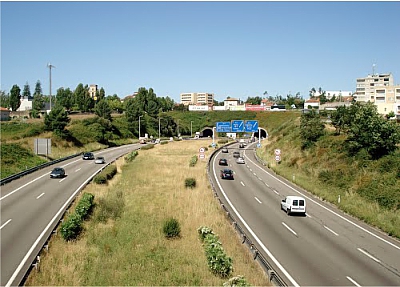
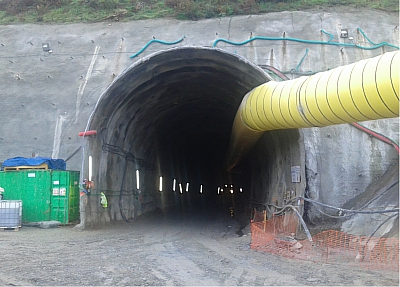
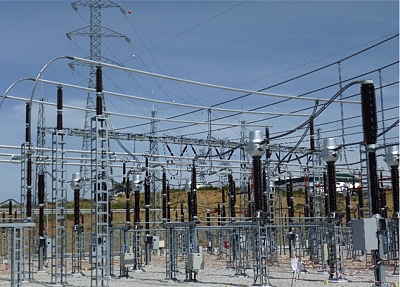
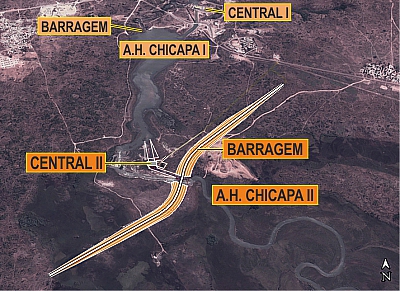
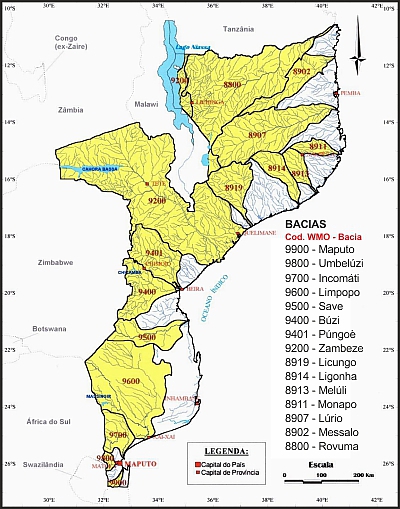
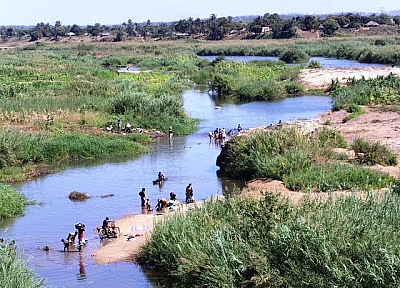

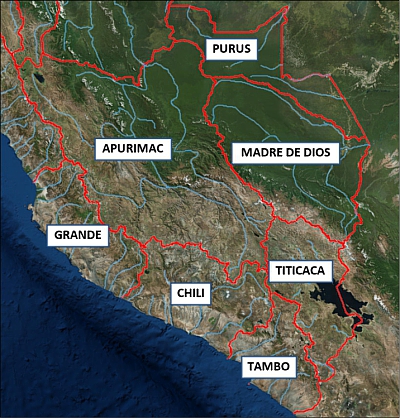
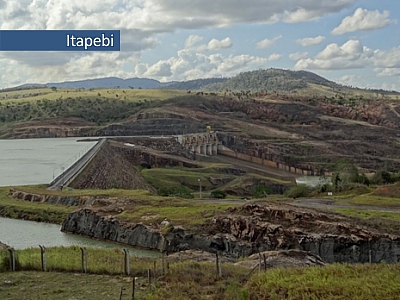
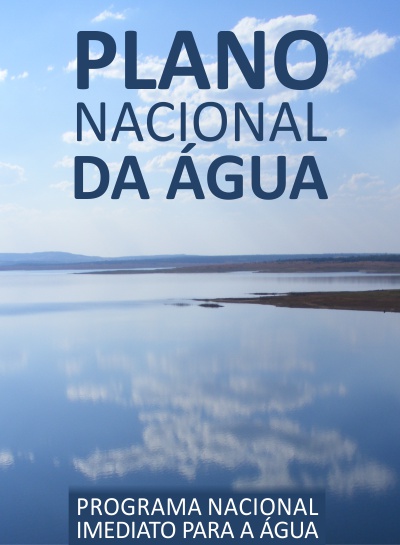
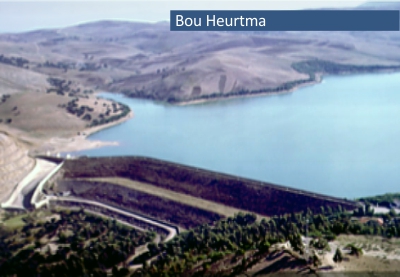
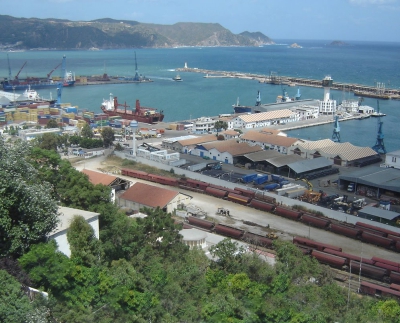
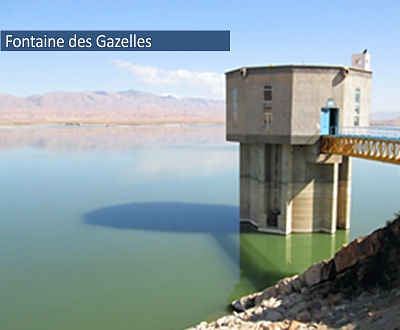
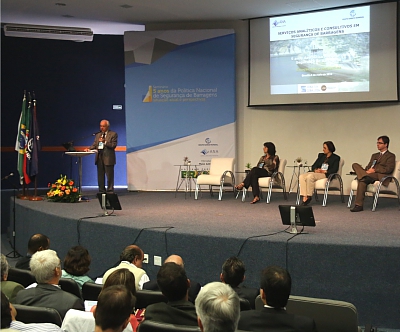
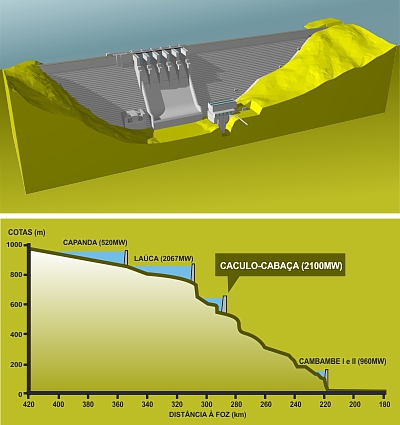
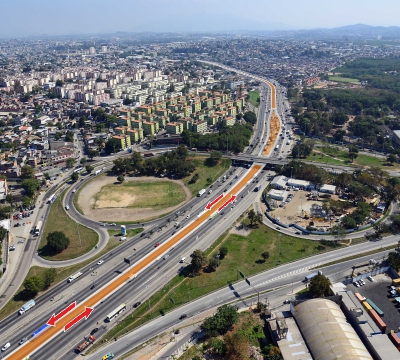
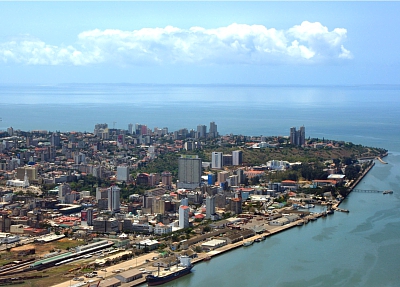
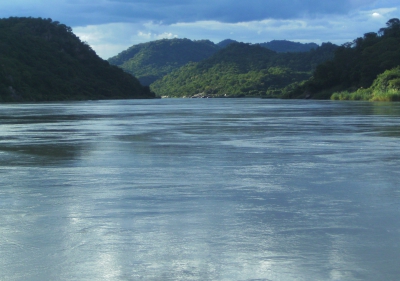
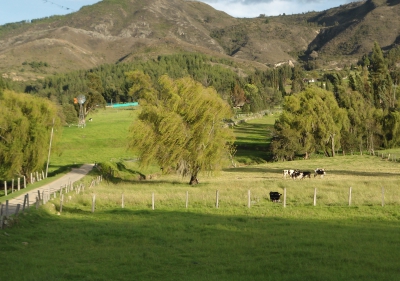
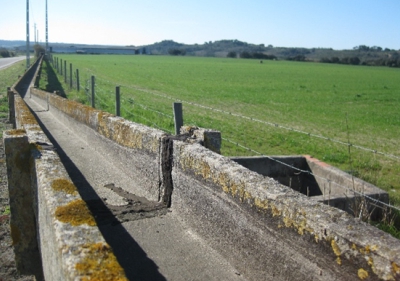
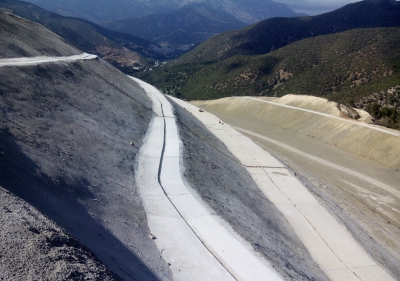
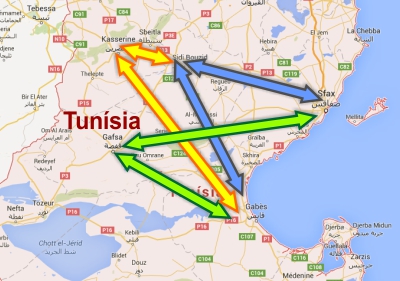
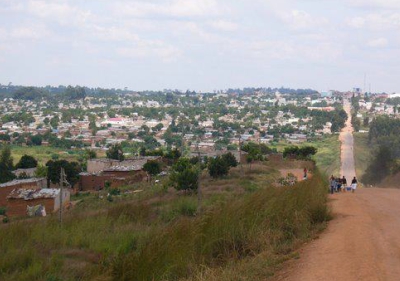

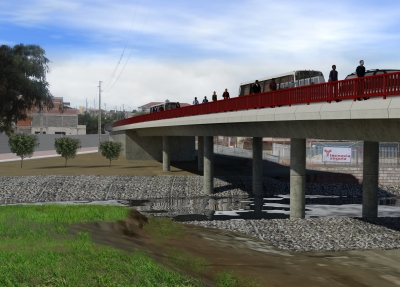
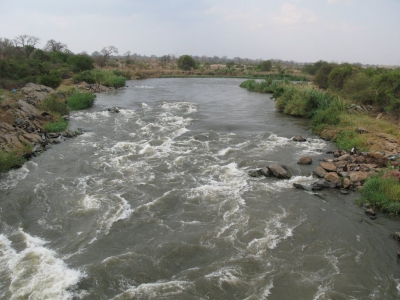
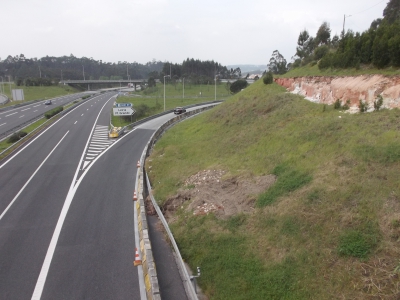 BRISA
BRISA